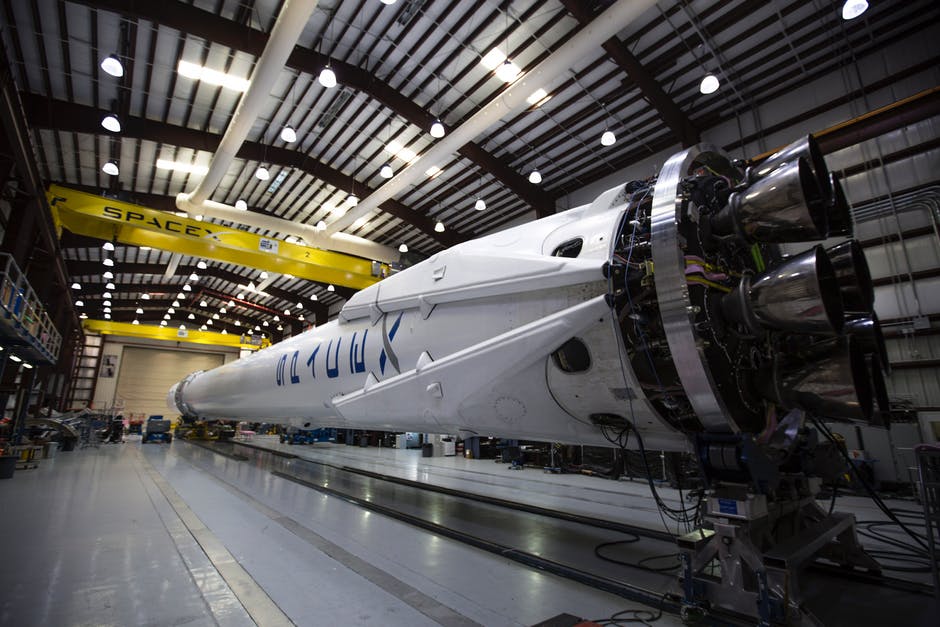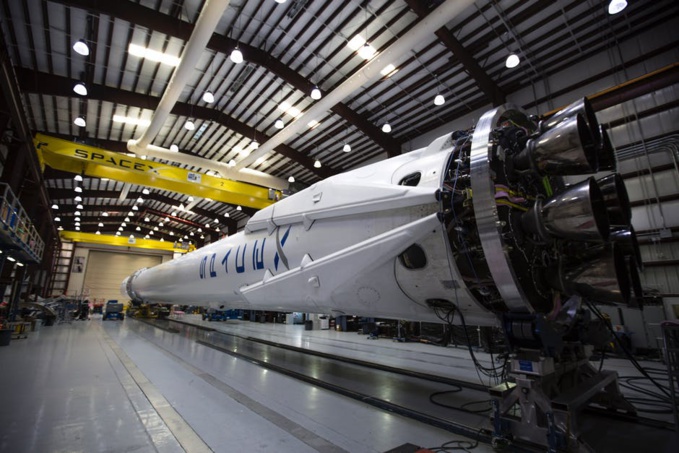Approximately nine minutes after the launch, the first stage of the two-stage rocket successfully landed on a floating platform in the Atlantic Ocean. As the company noted, the platform is called "Of Course I Still Love You". SpaceX founder Elon Musk called the launch "an incredible milestone in the history of space".
"This will be a revolution in space flights. It took 15 years to achieve this", said Elon Musk. The successful launch was also commented by representatives of the National Aeronautics and Space Administration (NASA): "Congratulations to SpaceX with another historic launch!"
According to Bloomberg, reuse of used missiles will be an important step for SpaceX, because it can allow the company to reduce costs of subsequent launches. The Verge explained that engines and fuel tanks are the most expensive parts of the rocket. According to SpaceX’s President Gwynne Shotwell, savings from re-using the first stage can reach 30%. In this regard, it is possible that cost of Falcon 9 launches will decrease from $ 60 million to $ 40 million. "And the lower launch price can make flights into space more affordable for companies in the long term", the publication notes.
Earlier this month, SpaceX launched its Falcon 9 rocket with EchoStar-23 satellite. The device is intended for broadcasting throughout South America. Launch of the satellite was scheduled for 2016, but it had to be postponed due to Falcon 9’s explosion during the pre-start tests.
Cost of one launch of Falcon 9 with a cargo to space is about $ 60 million. A significant portion of this expenditure is spent on construction of the rocket’s first stage. This is where the most powerful engines, which ensure the rocket's detachment from the earth's surface, are located.
In the traditional missile building, the first stage after reaching the required altitude is thrown off and flooded in water. According to the idea of the Musk, if the first stage can successfully land without damage, it can be reused again and again, thereby significantly reducing cost of space launches. Landing is carried out with help of built-in rocket engines.
Before, SpaceX has taken a total of four attempts to "catch" the first stage - three on water and one on a platform located on the ground. All previous attempts at landing on the floating platform were unsuccessful, although the latter seemed to be ideal. However, the landing on the ground occurred in December 2015 ideally, although this is not what founder of SpaceX, Elon Musk, aspires.
According to him, landing on the floating platform would theoretically allow preserving the first stage in the event that its separation occurred at a speed of more than six thousand kilometers per hour and up to nine thousand kilometers. Ground landing is possible only with its separation at a speed of less than six thousand kilometers per hour. Thus, landing on the offshore platform covers a wider range of launches than landing of the first stage on the spaceport on the ground.
On November 23, 2015, private space company Blue Origin of Amazon’s founder Jeff Bezos test-landed space booster module on the ground of the New Shepard. This was a suborbital spacecraft designed primarily for tourist purposes, not like full-fledged Falcon 9. Despite this, no one managed to land the accelerating module from a height of more than a hundred kilometers before Blue Origin. In addition, the company is going to use its experience of landing the New Shepard booster module for another rocket capable of delivering cargoes into orbit.
source: theverge.com
"This will be a revolution in space flights. It took 15 years to achieve this", said Elon Musk. The successful launch was also commented by representatives of the National Aeronautics and Space Administration (NASA): "Congratulations to SpaceX with another historic launch!"
According to Bloomberg, reuse of used missiles will be an important step for SpaceX, because it can allow the company to reduce costs of subsequent launches. The Verge explained that engines and fuel tanks are the most expensive parts of the rocket. According to SpaceX’s President Gwynne Shotwell, savings from re-using the first stage can reach 30%. In this regard, it is possible that cost of Falcon 9 launches will decrease from $ 60 million to $ 40 million. "And the lower launch price can make flights into space more affordable for companies in the long term", the publication notes.
Earlier this month, SpaceX launched its Falcon 9 rocket with EchoStar-23 satellite. The device is intended for broadcasting throughout South America. Launch of the satellite was scheduled for 2016, but it had to be postponed due to Falcon 9’s explosion during the pre-start tests.
Cost of one launch of Falcon 9 with a cargo to space is about $ 60 million. A significant portion of this expenditure is spent on construction of the rocket’s first stage. This is where the most powerful engines, which ensure the rocket's detachment from the earth's surface, are located.
In the traditional missile building, the first stage after reaching the required altitude is thrown off and flooded in water. According to the idea of the Musk, if the first stage can successfully land without damage, it can be reused again and again, thereby significantly reducing cost of space launches. Landing is carried out with help of built-in rocket engines.
Before, SpaceX has taken a total of four attempts to "catch" the first stage - three on water and one on a platform located on the ground. All previous attempts at landing on the floating platform were unsuccessful, although the latter seemed to be ideal. However, the landing on the ground occurred in December 2015 ideally, although this is not what founder of SpaceX, Elon Musk, aspires.
According to him, landing on the floating platform would theoretically allow preserving the first stage in the event that its separation occurred at a speed of more than six thousand kilometers per hour and up to nine thousand kilometers. Ground landing is possible only with its separation at a speed of less than six thousand kilometers per hour. Thus, landing on the offshore platform covers a wider range of launches than landing of the first stage on the spaceport on the ground.
On November 23, 2015, private space company Blue Origin of Amazon’s founder Jeff Bezos test-landed space booster module on the ground of the New Shepard. This was a suborbital spacecraft designed primarily for tourist purposes, not like full-fledged Falcon 9. Despite this, no one managed to land the accelerating module from a height of more than a hundred kilometers before Blue Origin. In addition, the company is going to use its experience of landing the New Shepard booster module for another rocket capable of delivering cargoes into orbit.
source: theverge.com



















